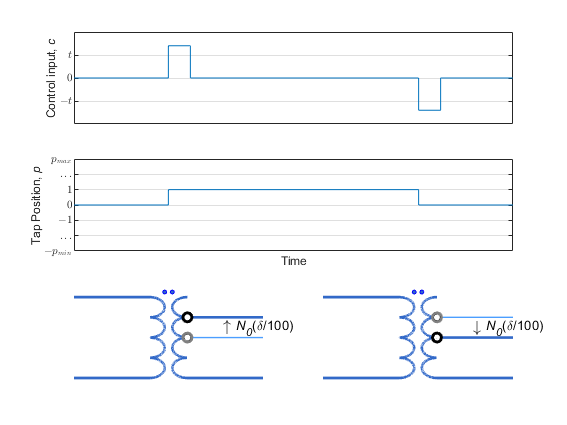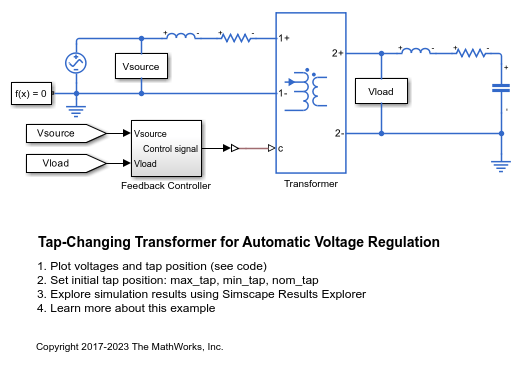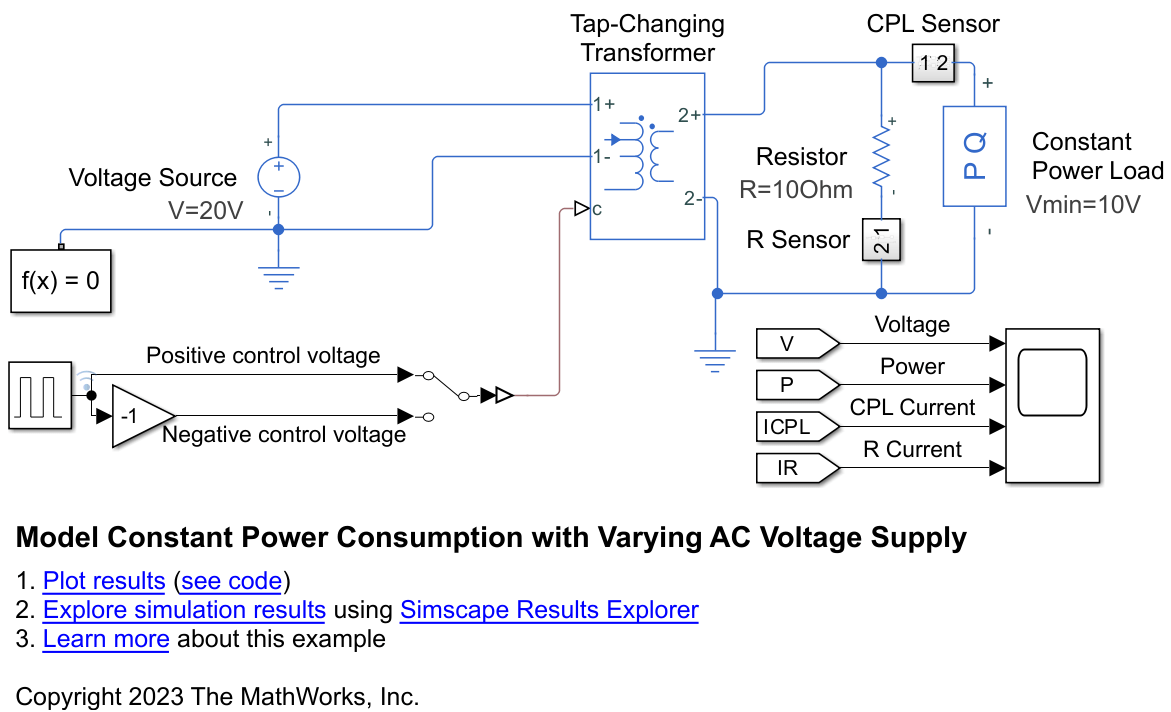Tap-Changing Transformer
Single-phase tap-changing transformer
Libraries:
Simscape /
Electrical /
Passive /
Transformers
Description
The Tap-Changing Transformer block represents a single-phase tap-changing transformer. You can vary the turns-ratio of the transformer during the simulation using the control input.
Use this component to regulate or change the output voltage of a linear transformer during a simulation. To model the effects of saturation, consider using the Nonlinear Transformer block.
Operating Principle
Use the control input c to change the tap position of the transformer.
Increase c above the Control threshold, t, to increase the tap position p by one.
Decrease c below the negative of the Control threshold to decrease the tap position p by one.
This figure shows the tap-response to a control input.

In the diagram:
N0 is the nominal number of turns for the tap-changer winding.
δ is the percent change in turns per tap position step. Specify this value using the Change per tap (%) parameter.
pmin and pmax are the minimum and maximum allowable tap indices. Specify these values with the Minimum tap index (nominal=0) and Maximum tap index (nominal=0) parameters.
To select the tap-changer winding, use the Tap-changer location parameter. The overall turns ratio, n, depends on this location:
PrimarySecondary
where n0 is the nominal turns ratio for the transformer.
Equivalent Circuit
The equivalent circuit is shown in the diagram.

Here:
Rp and Rs are the primary and secondary series resistances, respectively. Changes in the tap position affect these values.
Llp and Lls are the primary and secondary leakage inductances, respectively. Changes in the tap position affect these values.
Rm and M are the magnetization resistance and inductance, respectively. Changes in the tap position affect these values.
n is the turns ratio of the transformer.
Gp and Gs are the primary and secondary leakage conductances, respectively. Changes in the tap position do not affect these values.
Examples
Ports
Conserving
Parameters
Extended Capabilities
Version History
Introduced in R2018a


